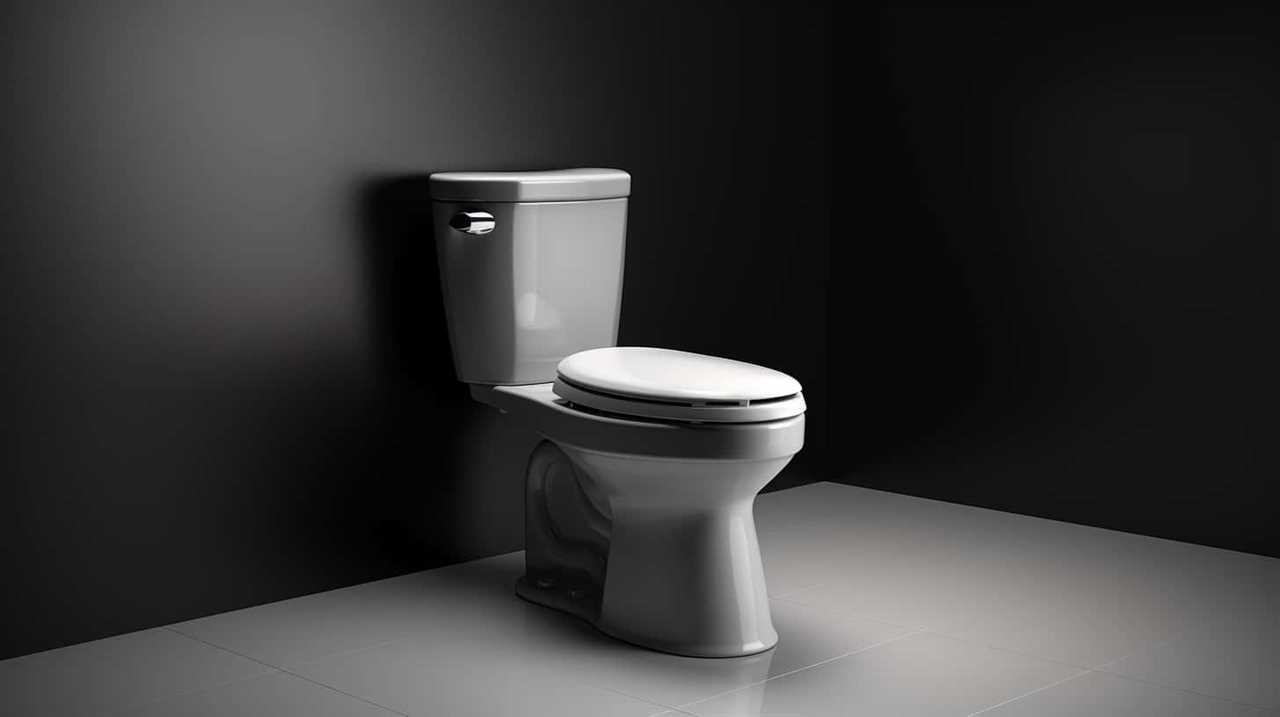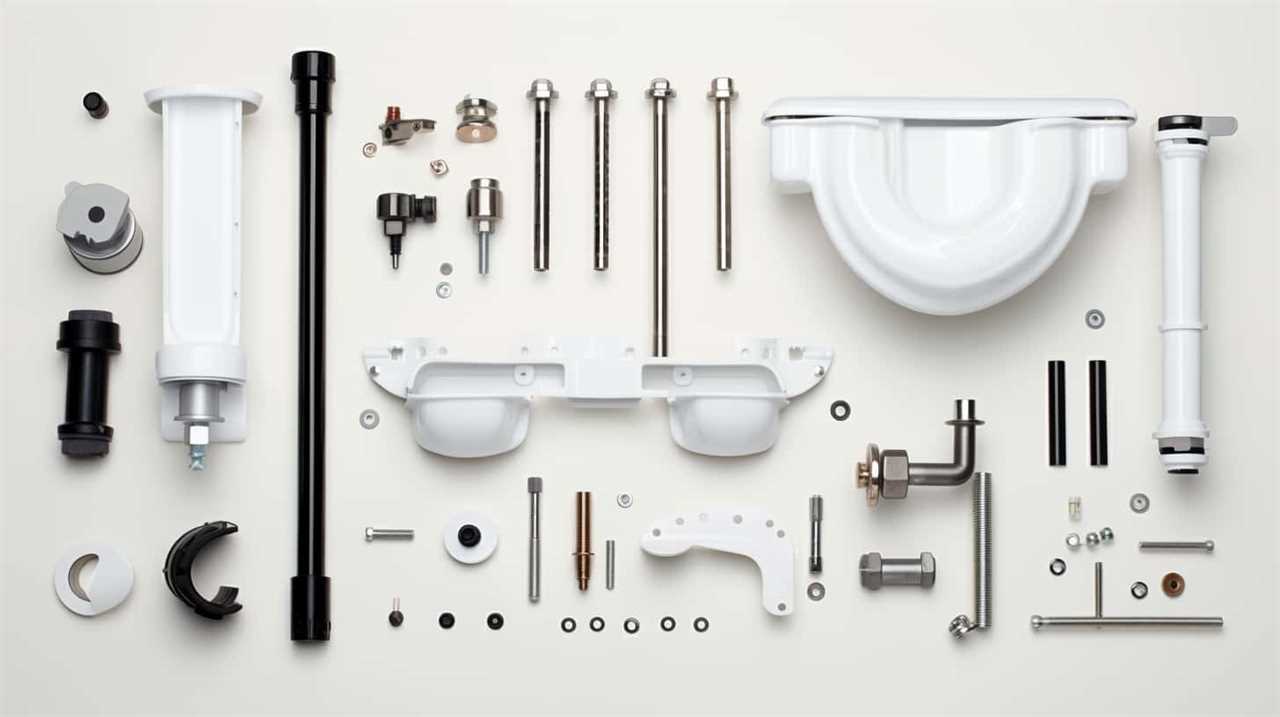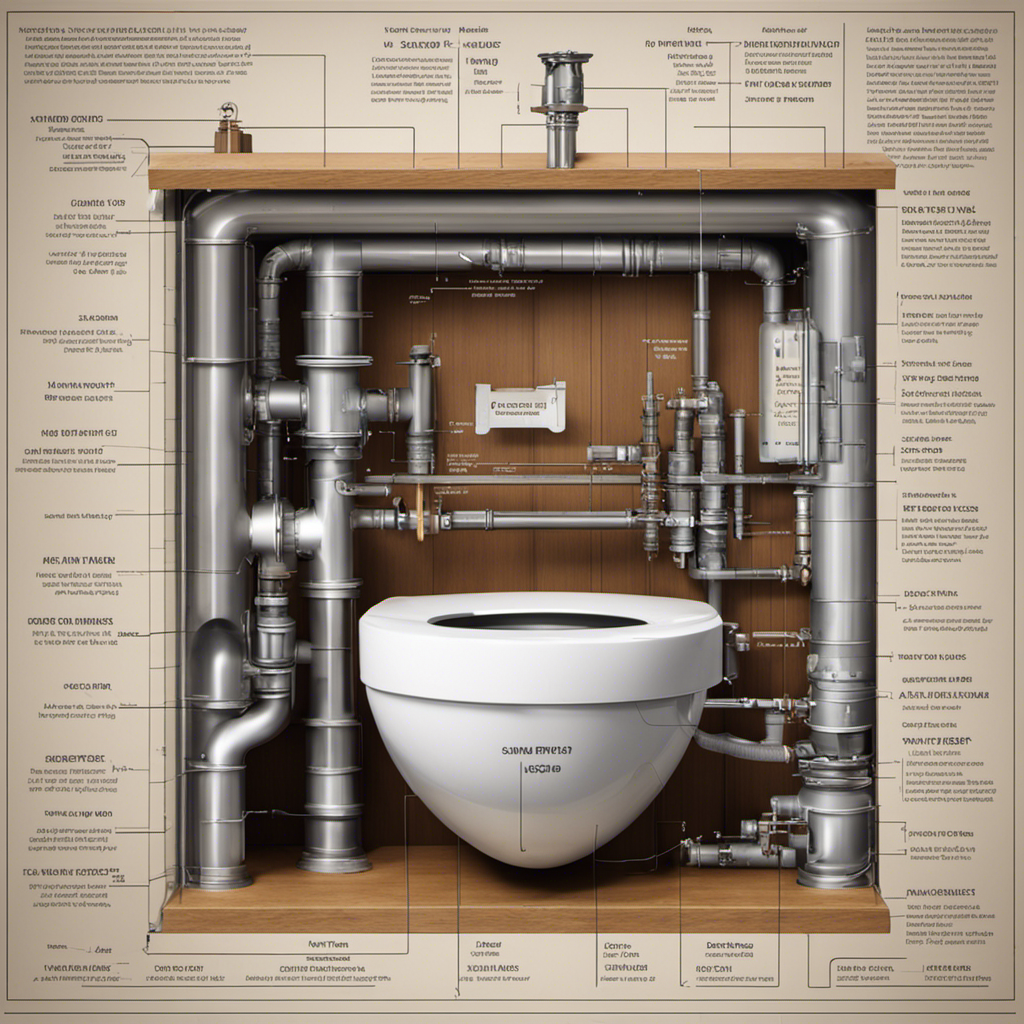Have you ever wondered what happens when we flush the toilet? It’s a simple action that we perform multiple times a day, but have you ever stopped to think about the intricate process that takes place behind the scenes?
In this article, we will delve into the world of plumbing systems, treatment facilities, and the environmental impact of wastewater. Get ready to uncover the secrets of what happens when we push that lever and gain a mastery over this everyday phenomenon.
Key Takeaways
- The toilet mechanism is a complex system designed to remove waste and transport it through the plumbing system using gravity and water pressure.
- Wastewater undergoes a series of treatment processes, including screening, primary treatment, secondary treatment, and tertiary treatment, to remove impurities and contaminants and ensure safe disposal or reuse.
- Excessive nutrients and heavy metals in wastewater can have detrimental effects on aquatic life and ecosystems, including algal blooms, oxygen depletion, and disruptions in physiological processes.
- Untreated wastewater can introduce pathogens, chemicals, and sediments into the environment, posing risks to human and animal health, as well as disrupting ecosystems and affecting biodiversity.
The Flush: What Happens When You Push the Lever
When we push the lever, a series of actions is set into motion to effectively flush the toilet. The toilet mechanism is a complex system designed to efficiently remove waste from the bowl and transport it through the plumbing system.
As we apply pressure to the lever, it activates a flush valve that opens and releases water from the tank into the bowl. The water pressure created by this release forces the waste and water down the trapway and into the sewer line.

Simultaneously, the refill valve opens to allow fresh water to enter the tank, preparing it for the next flush. This synchronized process ensures that waste is effectively removed from the bowl and transported through the plumbing system for proper disposal.
Now let’s explore how the plumbing system transports waste.
The Plumbing System: How Does It Transport Waste
After the waste and water are forced down the trapway and into the sewer line, the plumbing system transports them for proper disposal. The sewage disposal process is a crucial part of maintaining public health and environmental sustainability.
Here’s how the plumbing system efficiently transports waste:

- Gravity: The plumbing system utilizes the force of gravity to move waste and water through the pipes. This allows for a smooth flow and reduces the need for additional energy.
- Sewer Lines: The waste is transported through a network of sewer lines, which are connected to the main sewer system. These pipes are designed to handle large volumes of waste and direct it towards the sewage treatment facility.
- Pumping Stations: In some cases, sewage needs to be pumped uphill or over long distances. Pumping stations are strategically positioned along the sewer lines to provide the necessary pressure and keep the waste moving towards its final destination.
Treatment Facilities: Where Does the Wastewater Go
Once the wastewater has been transported through the plumbing system, it undergoes treatment at specialized facilities. These treatment facilities play a crucial role in sewage disposal and preventing water pollution. At these facilities, the wastewater goes through a series of processes to remove contaminants and make it safe for disposal or reuse.
To better understand the treatment process, let’s take a look at a simplified overview of the steps involved:
| Treatment Process | Description |
|---|---|
| Screening | The wastewater passes through screens to remove large debris such as plastics and paper. |
| Primary Treatment | Solid particles settle at the bottom while oils and grease rise to the surface, forming a layer that is skimmed off. |
| Secondary Treatment | Microorganisms break down organic matter, converting it into carbon dioxide, water, and more microorganisms. |
| Tertiary Treatment | Advanced filtration and disinfection processes remove remaining impurities before the treated water is released into the environment or reused. |
Understanding the treatment process is essential in comprehending how wastewater is cleaned and made safe for disposal or reuse, which we will discuss in the next section.
The Treatment Process: How Is the Wastewater Cleaned
To clean the wastewater, we begin by subjecting it to a series of treatment processes. These processes aim to remove impurities and contaminants, ensuring that the water is safe for reuse or discharge. The treatment process consists of several steps:

- Preliminary Treatment: This involves the removal of large objects, such as debris and trash, through screening and grit removal. It prevents clogging and damage to the equipment in subsequent stages.
- Primary Treatment: In this step, the wastewater is allowed to settle in large basins, allowing solid particles to settle at the bottom. This sludge is then removed, leaving relatively clearer water.
- Secondary Treatment: Here, microorganisms are used to break down organic matter in the wastewater. These microorganisms consume the organic pollutants, converting them into harmless substances.
After these initial steps, the water undergoes further purification processes, such as filtration and disinfection. Filtration removes any remaining suspended solids, while the disinfection process eliminates harmful microorganisms, ensuring that the water meets the required standards for safe reuse or discharge.
Environmental Impact: What Happens to the Treated Wastewater?
Now, let’s explore the environmental impact of the treated wastewater. After undergoing the wastewater treatment process, the treated water is discharged back into the environment. This treated wastewater, although cleaner than before, still contains traces of pollutants and contaminants that can potentially impact the environment. To better understand the potential environmental impact, let’s take a look at the table below:
| Pollutant | Potential Environmental Impact |
|---|---|
| Nutrients | Excessive nutrients can lead to algal blooms, causing oxygen depletion in water bodies and harming aquatic life. |
| Heavy Metals | Heavy metals can accumulate in organisms and disrupt their physiological processes, leading to bioaccumulation and biomagnification. |
| Pathogens | Untreated or insufficiently treated wastewater can introduce pathogens into the environment, posing risks to human and animal health. |
| Chemicals | The presence of chemicals in treated wastewater can have toxic effects on aquatic organisms and ecosystems. |
| Sediments | Sediments carried by treated wastewater can smother aquatic habitats, affecting biodiversity and ecosystem health. |
Frequently Asked Questions
Are There Any Health Risks Associated With Flushing the Toilet?
There are health risks associated with toilet flushing, such as water contamination and the spread of bacteria. It is important to be aware of these risks and take appropriate measures to prevent them.
Can Flushing the Toilet Too Often Cause Any Problems With the Plumbing System?
Flushing the toilet too often can cause problems with the plumbing system. Excessive flushing frequency can lead to clogs and strain on the pipes, resulting in potential leaks or backups. Additionally, it can increase the water bill.

Is It Possible for Items to Get Stuck in the Plumbing System When Flushing the Toilet?
Yes, it is possible for items to get stuck in the plumbing system when flushing the toilet. This can lead to serious plumbing problems that require professional assistance to resolve.
How Does the Treatment Process Differ for Wastewater From Commercial Buildings Compared to Residential Buildings?
Commercial and residential wastewater treatment processes differ in several ways. Commercial buildings produce larger volumes of wastewater with different contaminants, requiring more advanced treatment techniques. These differences impact the environment, necessitating tailored approaches for efficient and environmentally-friendly treatment.
Are There Any Alternative Methods for Disposing of Wastewater That Do Not Involve Treatment Facilities?
Composting toilets and greywater systems offer alternative methods for disposing of wastewater without treatment facilities. These sustainable options can help reduce water usage and environmental impact, making them viable solutions for a more eco-friendly future.
Conclusion
In conclusion, flushing the toilet sets off a complex process that involves the plumbing system and treatment facilities. The wastewater is transported through pipes to treatment plants where it undergoes a thorough cleaning process.

A fascinating statistic is that, on average, a person flushes the toilet about six times a day, resulting in billions of gallons of wastewater being treated each year.
Understanding this process helps us appreciate the importance of proper waste disposal and the role it plays in maintaining a healthy environment.










